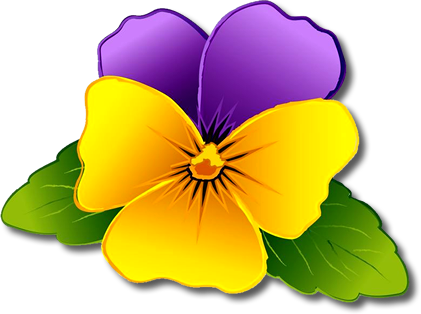
19 Sucker for Succulents
December 4, 2020
21 Bushnell Gardens Nursery
December 18, 2020T o me, Fall means 1) less sweating, or at least no more puddling, 2) the perfect time to plant (though many people don’t, which shocks me) because the soil is still warm, 3) time to relax and enjoy the fruits of your hard work all year long, and 4) my favorite: a chance to redesign an area of your landscape that you thought you had completed but apparently—by how things have turned out—you had not.
It also means Fabulous Fall Foliage—which is easy to have in your garden with the right plant choices. Here are some of my favorites.
Trees for Fall Foliage
If fall colors don’t make you want to get out there and add variety to your garden, I don’t know what will! Who does not enjoy being outdoors at this time of year? And when I'm stuck working in my office, I want to look out my window at something breathtakingly beautiful. Here is what I see...
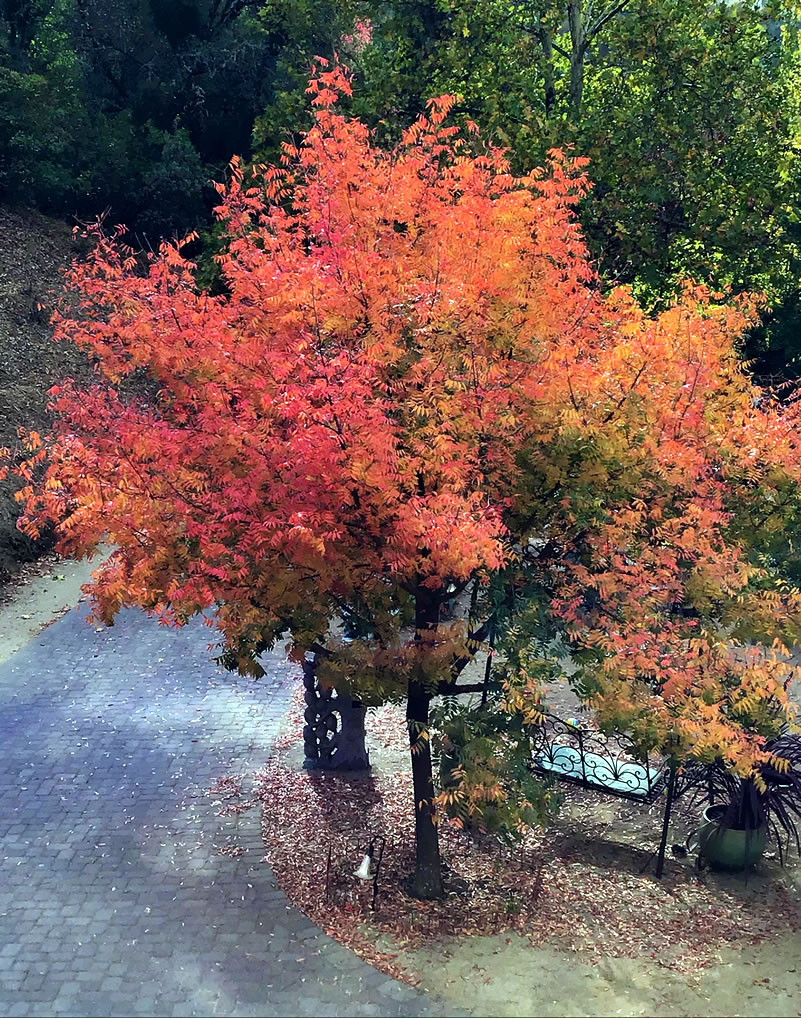
Pistacia chinensis ‘Keith Davey’
At least 3 times a year I do some light interior pruning on this tree. Otherwise it grows very thick—which is the natural growth pattern for these trees, but I don’t like it. I have a bit of an issue (illness?) in that I like all my trees to be well groomed so they allow sunshine and air to stream through the interior.
I bet you are asking yourself, "What tool does she use for pruning trees?"
For most pruning work I have always used a 16-foot pole handsaw, and for large limbs, my husband wielding one of his big heavy power tools. But if your husband is like mine, he can’t seem to find the tool when needed, or has no gas or oil to mix fuel for the tool, and then can't get the thing started (which causes a whole bunch of fussing). By the time he does get it working, an hour has passed. At which point I realize it would have been better just to do the job myself with my pole handsaw and gotten an arm workout burn. (Do I hear a chuckle?)
If that's you, then I am here to rescue you and make your life easier. I recently put that pole handsaw away and bought myself a Milwaukee battery-powered pole saw with a 3-foot extension. And let me just say it is freakin’ AMAZING!
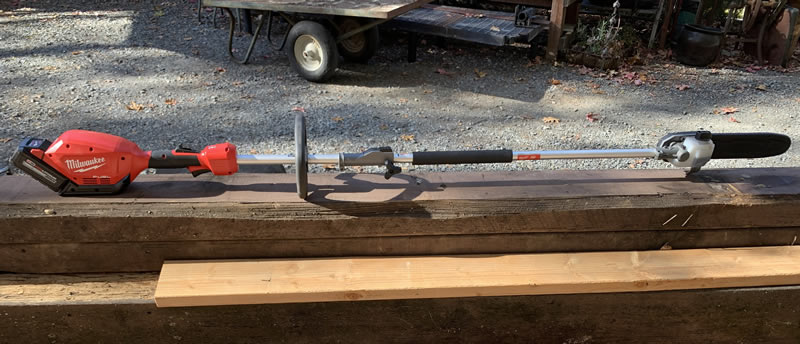
No husband required.
Using this thing, I pruned 6 trees for a client in under an hour. So awesome and made the husband a tad jealous. One good thing about my husband is, (there are many) he always taught me to let the tool do the work. And that is easy when the tool does its work like this one does.
Though, mind you, when you add the extension to the pole, the whole thing becomes a tad heavier, so make sure to do your kettlebell exercises.
For trees that have fall colors, think of the common ones such as Betula nigra (River Birch), Nyssa sylvatica (Black Gum), Liquidambar styraciflua (American Sweetgum), Cornus ssp. (Dogwood), Populus tremuloides (Quacking Aspen)—all of which are easy to find photos for online. Or maybe this rare Acer of mine.
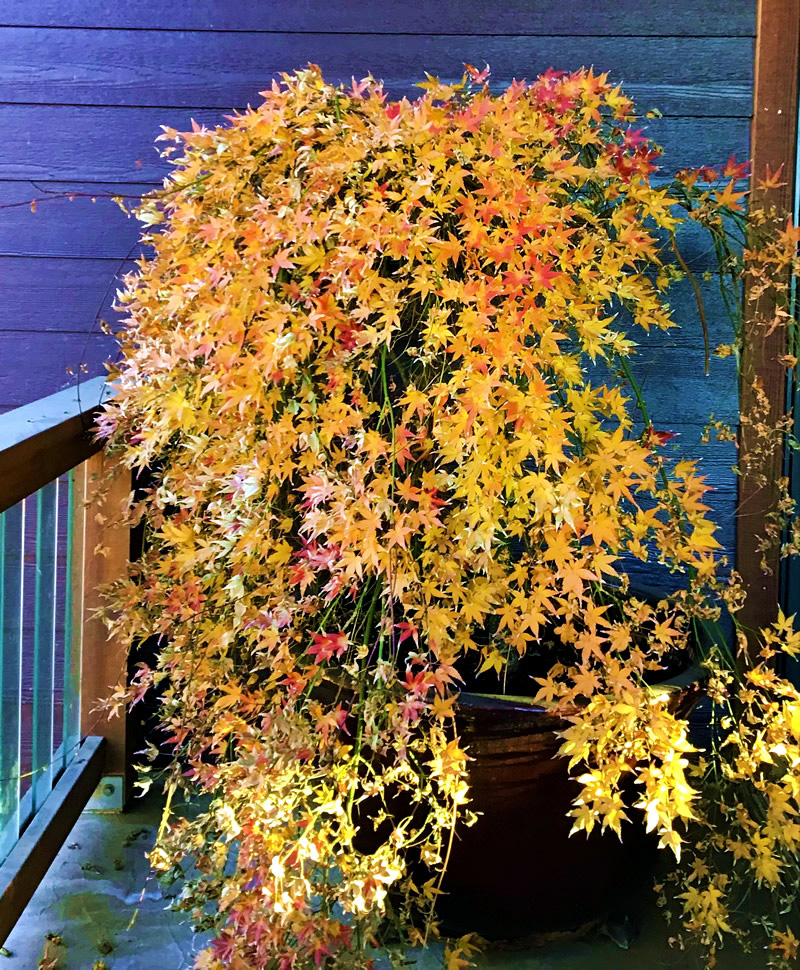
Acer palmatum ‘Groundcover’
Years ago my husband bought me this tree and stored it near his construction yard until he could surprise me for my birthday. When he told me where he'd been keeping it, I said, "Boy are you lucky the deer didn't eat it!" The color almost drained from his face. He had paid a lot of money for it, because, unlike me, he does not like to "watch grass grow" by installing "itty-bitty plants" and have to wait for them to grow—not when he can get instant impact by spending big money on more mature plants. (So exhausting...)
Because of its price tag, my Acer sits on my kitchen deck, unreachable by deer. And good news, it's a "mommy!" I propagated two of these—one for Aunt Patti and one for me.
Meet the baby in the family...

Acer palmatum ‘Groundcover’ (The Baby), Hackonechloa macra (Hakone Grass)
This variety is meant to reach 2 feet tall and 4 feet wide. But I did not want this baby to grow as tall as its mother. So I altered the growth pattern to make it hug the ground, and now it is the perfect "spiller" for this container. Notice how I strategically placed it under the Hakone Grass specifically for contrast in fall colors.
I bring up this strategy, Dear Readers, to show that, if you want spectacular colors in fall, you must think ahead to future seasons. Don’t just plant for The Now. Be smart, and then be patient!
Shrubs for Fall Foliage
As we were driving from the Oregon Coast into Corvalis, Aunt Patti and I—per usual—were running on fumes...the CAR that is, and the needle was in the RED! Earlier we had been in a conundrum: should we look for gas or speed ahead to our next destination (a nursery in case you have forgotten our first priority) to make sure we got there before it closed. Guess what we chose. LOL! And OMG! By the time we arrived, gas fumes were not the main issue. We needed to pee bad!
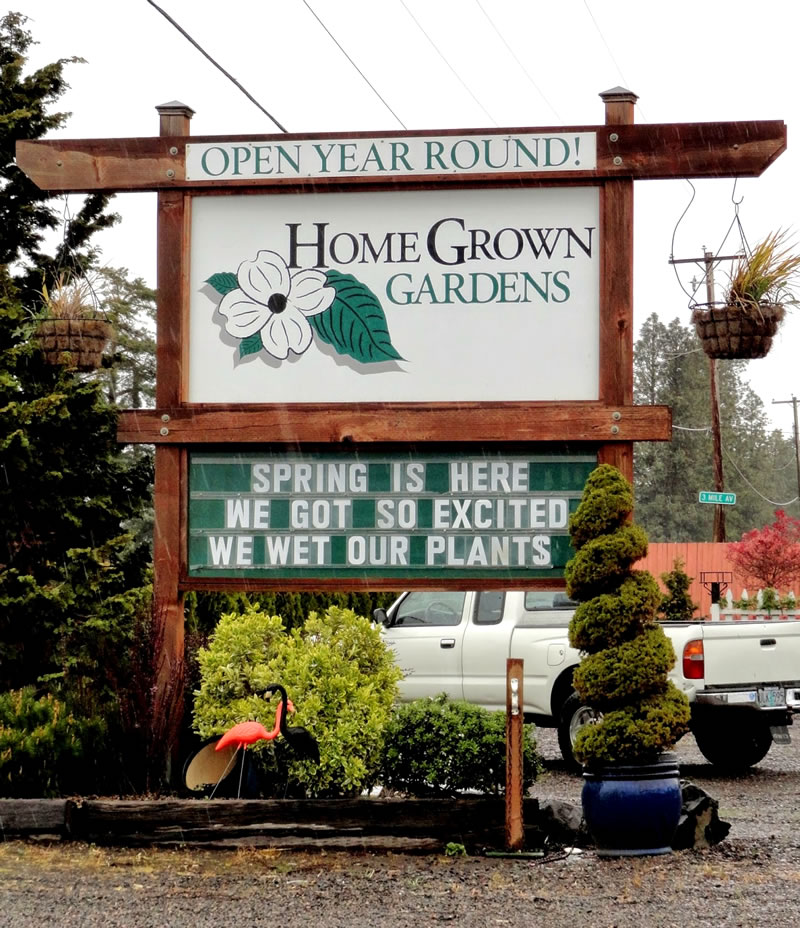
After getting that out of the way, I found this unusual and hard to find Barberry. I was drawn to it because of its chartreuse foliage with hints of red edging on the leaves. But I had no idea those leaves would turn a fabulous orange, yellow and red in fall!

Berberis thunbergii ‘BailErin’ (Limoncello Barberry)
Unlike other varieties that tend to be more messy—or as I call it, "eclectic"—Limoncello Barberry has leaves that are more round, and the plant forms a nice mound.
Here's another Barberry.
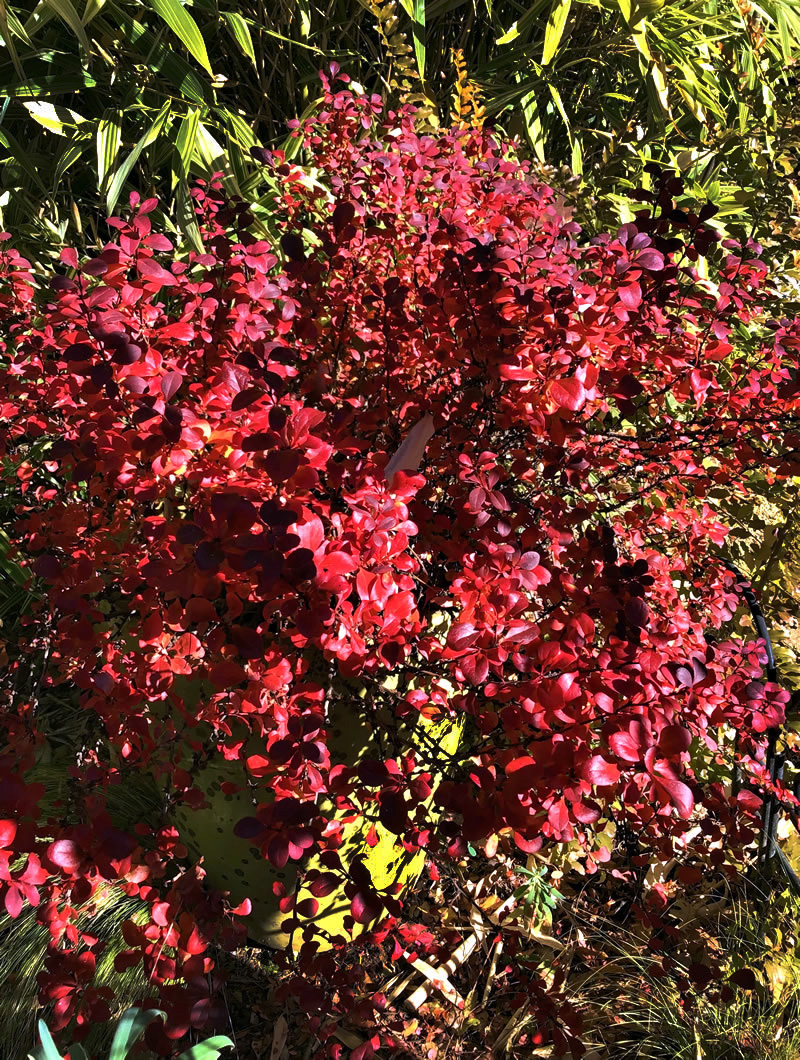
Berberis thunbergii f. atropurpurea ‘Rose Glow’ (Japanese Barberry)
If you do not have Berberis in your garden, go get one. Does not matter which variety, they all turn fabulous colors in fall. Those I have included here are readily available in just about every nursery.

Berberis thunbergii ‘Sunsation’
Here's another shrub that is stunning in ALL seasons.
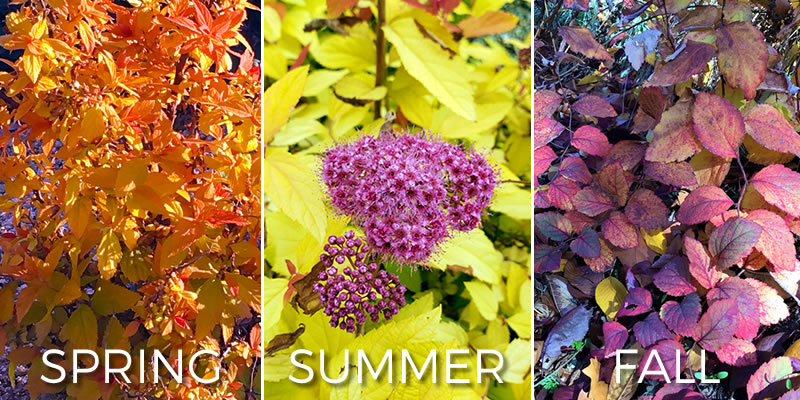
Spiraea japonica ‘Double Play Candy Corn’ (Japanese Spirea)
I have paired this Japanese Spirea with Carex ‘Red Rooster’ (remember the dead looking plant?) and Geum ‘Totally Tangerine’. I’ll post a picture of the three together next year when all are in bloom.
More Plants for Fall Foliage
I said in post 14 that you are crazy if you don’t "Fall" in love with grasses, and I featured Miscanthus sinensis ‘Gracillimus’ in summer and winter.
Here it is in fall.
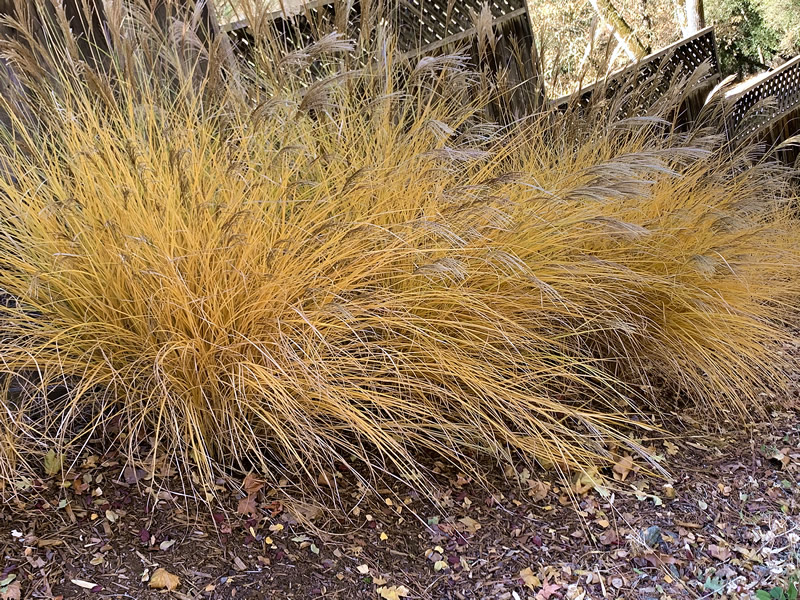
Miscanthus sinensis 'Gracilimus' (Maiden Grass)
Speechless!
Another category for fall color is plants that flower in late summer and fall. I say you cannot go wrong with this brilliant yellow sunflower.
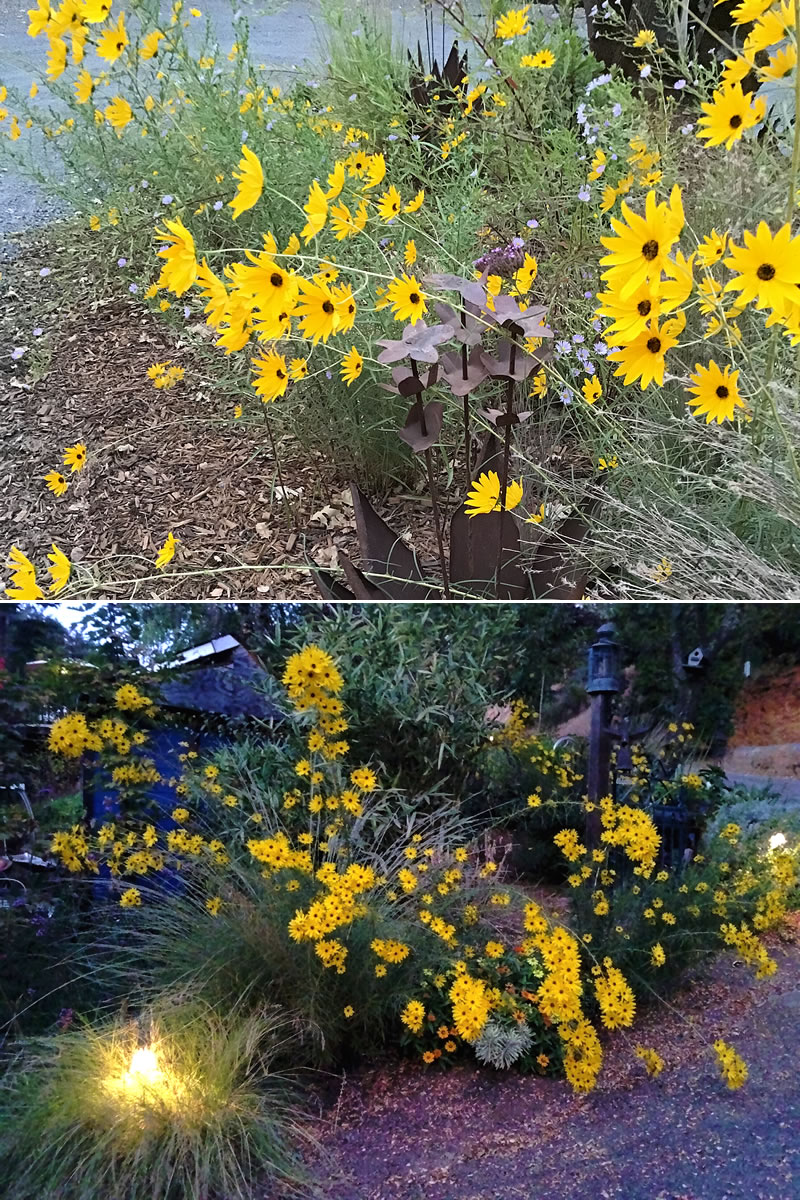
Helianthus salicifolius ‘Low Down’ (Willowleaf Sunflower)
I have 2 of them—one, driveway to front door, and another, driveway to garage—so that whichever way I turn, I have a smile!
This variety can grow up to 6 feet tall, but then it becomes weepy and heavy with blossoms. So in the middle of summer I cut mine down halfway to keep at a nice 4 feet.
Willowleaf Sunflower is not readily available. If you come across one, grab it up. I have tried to propagate it by cuttings, but no success. Propagation by division does work—which I do every 3 years on this plant. Thankfully, all its babies have flown the coop to give smiles to others.
This post cannot fit all the plants I want to share that have Fabulous Fall Foliage. (Obviously.) I'll try to share as I go along until my Fall 2021 edition. Looking forward to that!
In the meantime, YOU need to get busy NOW, planning and planting so that in Fall 2021—with 2020 hopefully far behind us—you will have fabulous fall colors on display in your own landscape. Chop chop! Fabulous foliage awaits...
Photos courtesy Sheri Lynn Burke. All rights reserved.

